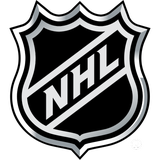
New goalie metric takes out defense
Save percentage has long been considered the best way to evaluate NHL goaltenders, despite an obvious flaw: It does not account for the difficulty of shots the goalie faces, which is dictated largely by the defense playing in front of him.
Michael Schuckers, a statistics professor at St. Lawrence University, sought to rectify that problem by devising a metric called "defense independent goalie rating," or DIGR. The stat is an adjusted save percentage that reveals the true ability of the goalie, regardless of his defensemen.
Schuckers mapped every shot each goalie faced last season, allowing him to isolate a goalie's save percentage against shots from every location on the ice.
He put those findings against a plot of every shot taken in the NHL in order to estimate how each goalie would fare not just against the shots he faced, but against the shots all the goalies faced -- therefore putting them all up against the same shots. (Empty-net, penalty and shootout shots were eliminated.)
Among goalies who faced at least 1,000 shots last season, the Oilers' Nikolai Khabibulin, who had a .900 DIGR, ranked as the worst. Not surprisingly, Edmonton had the league's worst record last season and the worst goal differential.
The Bruins' Tim Thomas finished atop the list, although he faced the eighth-easiest set of shots. While Thomas had a save percentage of .938, his DIGR was only .931.
The Canucks' Roberto Luongo finished second (.927 DIGR), percentage points ahead of the Ducks' Jonas Hiller (also .927). The Blues' Jaroslav Halak faced the hardest shots and finished 12th (.918), while the Kings' Jonathan Quick faced the easiest shots and ranked No. 24 (.909).

